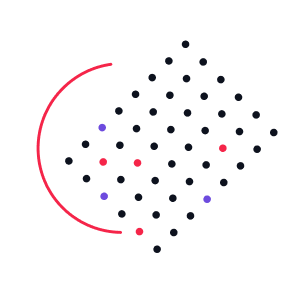-
-
1 East Chase St., Suite 218, Baltimore, MD 21202



ABOUT US
Welcome to Raman Technologies, Inc.
Since 2004, Raman Technologies, Inc. has provided exceptional consulting, technology, and training services to organizations across industries. Our mission is to bridge the gap between people, process, and technology—helping businesses achieve true operational excellence.
Our consultants and trainers have over 15 years of experience and hold advanced degrees in their respective fields. As partners with leading institutions in Agile, AI, Cisco, and Microsoft education, we deliver results that inspire confidence and lasting impact.
We don’t just deliver solutions—we empower transformation.

Consulting Services
Our consulting practice helps organizations adopt modern technologies and proven frameworks that accelerate growth and innovation.

Lean Agile Transformation
Implement scalable Agile frameworks to drive collaboration, speed, and adaptability.



Infrastructure Design & Implementation
Build secure, scalable IT systems tailored to your needs.


Get Started with Raman Technologies Today
Founded in 2004, Raman Technologies, Inc. is a trusted Technology and Management Consulting firm based in Baltimore, Maryland. We help organizations innovate, transform, and scale through expert consulting, certified training, and cutting-edge digital solutions.





Testimonials
Client Reviews
Hands-On Cisco Training That Really Prepares You
I took the Cisco Networking (CCNA) course at Raman Technologies, and it was one of the best learning experiences I’ve had. The instructor explained complex topics in a way that made them easy to understand, and the live labs gave me real hands-on experience. I passed my CCNA exam on the first try! Highly recommend to anyone serious about building a networking career.
Michael R.
Advanced Cisco Course with Real-World Focus
The Cisco Infrastructure & Security course went beyond theory — it focused on real-world application. The instructor had deep experience with enterprise-level Cisco environments and shared insights you just don’t get from online videos. The support team at Raman Technologies was also fantastic. I’ll definitely be back for my next certification.
Sarah T.
Agile Training That Transformed My Team
I enrolled in the Agile Project Management course to improve collaboration within our IT department. The class was interactive, practical, and perfectly balanced between Agile theory and implementation. We started applying Scrum techniques immediately after the training, and our productivity noticeably improved. Excellent course and delivery!
David K.
Eye-Opening AI Course with Practical Value
The AI and Automation Fundamentals course opened my eyes to how artificial intelligence is changing business processes. The instructor used real-world examples that helped me understand how to apply AI tools in my own organization. The mix of lecture and hands-on projects made the training engaging and actionable. Worth every penny!
Jennifer L.
PowerBuilder Training that Exceeded Expectations
I joined the PowerBuilder Application Development course to modernize our legacy systems. Raman Technologies delivered exactly what I needed — expert instruction, practical labs, and guidance tailored to our environment. The instructor’s knowledge was top-notch, and I left confident in applying what I learned. Five stars all the way!
Robert M.
Remarkable Agile Transformation Journey!
Raman Technologies completely transformed the way our organisation approaches product delivery. Their Agile coaches didn’t just introduce frameworks — they helped us shift our mindset and culture. Within months, our teams were collaborating more effectively, delivering faster, and continuously improving. The ROI on this transformation has been incredible. Highly recommend Raman Technologies for any company serious about becoming truly Agile!
Oliver H.
Exceptional Software Development Partner
We partnered with Raman Technologies for a complex enterprise software project, and the results were outstanding. Their development team is technically brilliant, detail-oriented, and proactive in solving challenges. The final product exceeded our expectations in both performance and user experience. They truly operate like an extension of our internal team. Five stars all the way!
Amelia W.
Strategic Insight That Drives Real Business Results
Raman Technologies brought a fresh, strategic perspective to our business. Their management consultants helped us streamline operations and identify new growth opportunities we hadn’t considered. The recommendations were practical and data-driven, leading to measurable improvements in efficiency and profitability. Their professionalism and insight are unmatched.
James L.
Best Agile Training Experience Ever!
The Agile training from Raman Technologies was engaging, insightful, and immediately applicable. The instructor’s real-world experience made the sessions both relatable and impactful. Our teams left the workshop not just understanding Agile concepts, but knowing exactly how to apply them in our daily workflows. This training has been a game-changer for our delivery teams!
Sophie T.
Outstanding Mobile App Development Team
Raman Technologies developed a sleek, high-performing mobile app for our business. From concept to launch, their communication was transparent and their technical expertise top-notch. The app has received great feedback from our users and has significantly improved our customer engagement. Couldn’t have asked for a better development partner!
Harry M.


Latest Blogs
Learn About The Latest News

01
Nov, 2025How Cisco Technologies Will Complement AI — Now and in the Future
Artificial Intelligence (AI) is transforming every industry—from healthcare to finance to education—but its true power depends on the underlying network...

25
Oct, 2025Understanding Cisco Certifications
Cisco’s certification program is structured to support multiple career-levels in IT networking, infrastructure, security, and automation. According to Cisco, they’ve issued over...

20
Oct, 2025Cisco’s Global Market Share and Strategic Vision for Future Growth
Cisco Systems remains one of the most influential technology companies in the world, commanding a dominant presence across...






























